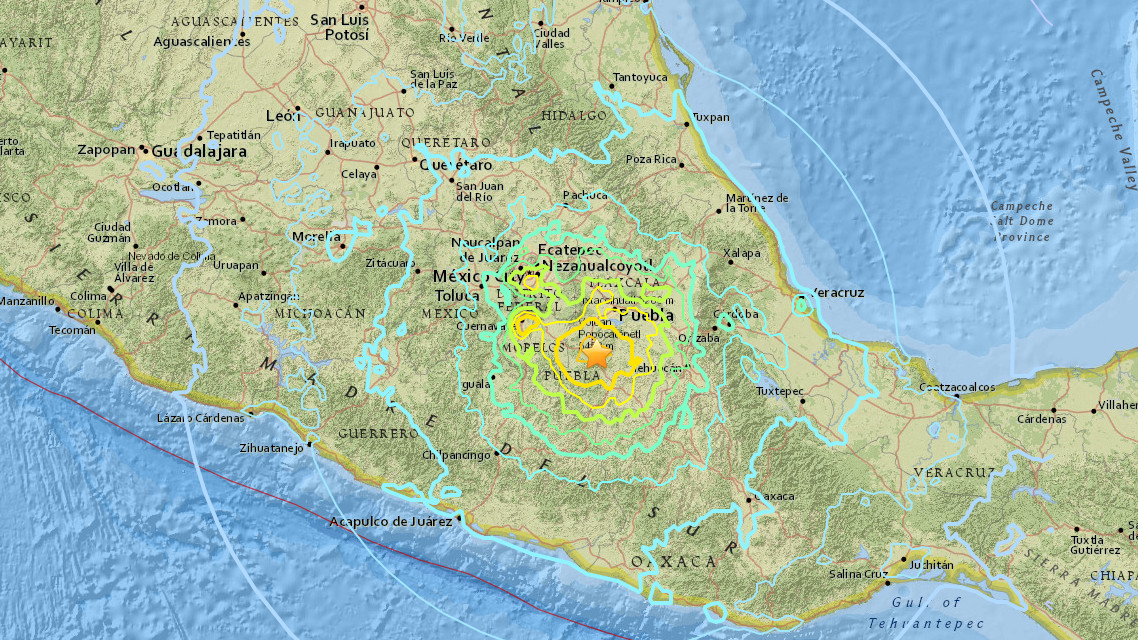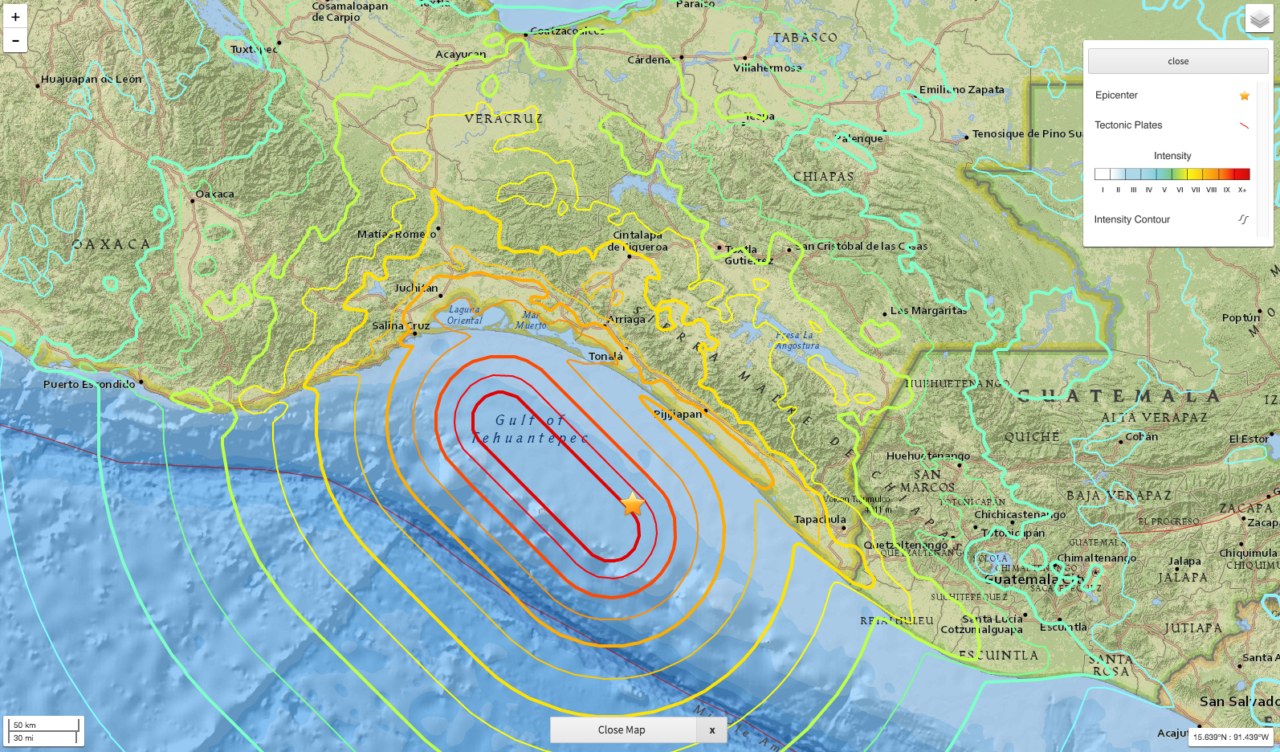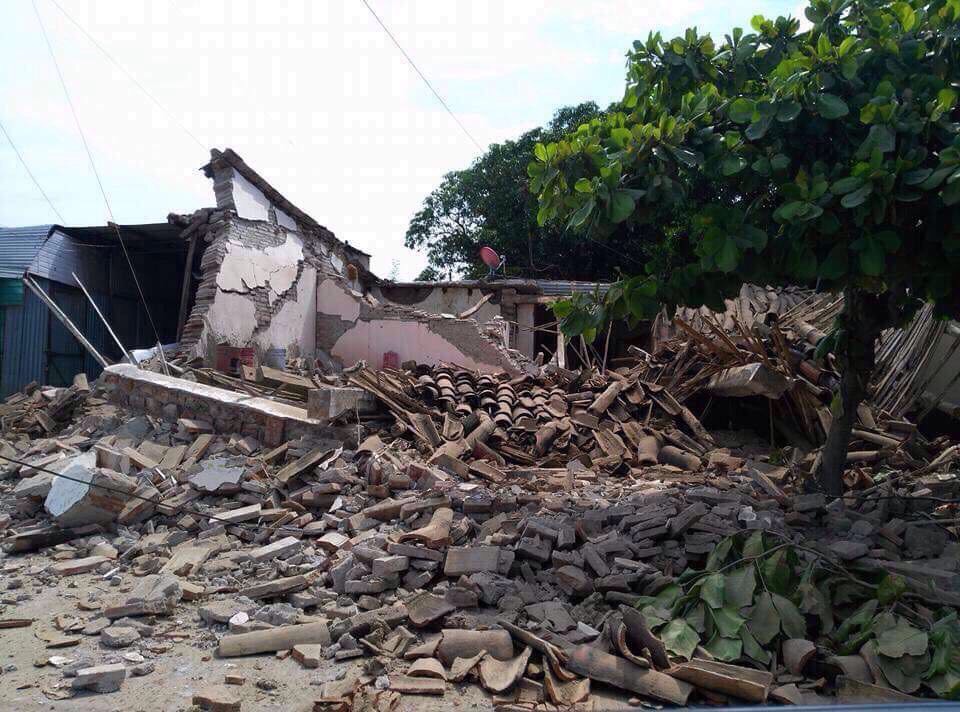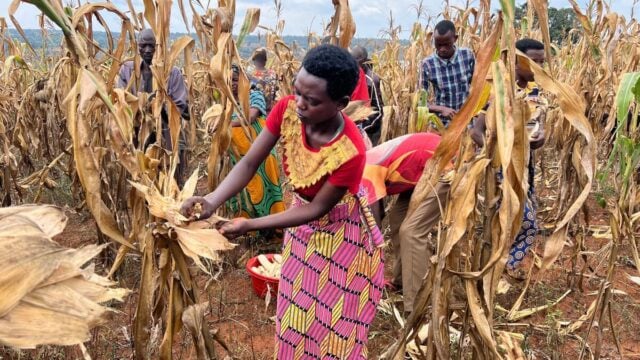At least 225 people died after a magnitude 7.1 earthquake struck central Mexico Tuesday, Sept. 19, on the 32nd anniversary of the 1985 Mexico earthquake that killed thousands. Hours before it hit, people throughout Mexico were conducting earthquake drills to mark the date.
“I heard this rumble in the walls, so I rushed downstairs,” said Victor Martinez, World Vision emergency communications manager based in Mexico City. “This quake was shorter than Friday’s (Sept. 7), but it felt much stronger. It felt as if the floor was jumping, like a vertical motion. People were really nervous. Then I drove to my nephew’s school to make sure they were okay and saw large amounts of people exiting buildings to pick up their children that were in school. I saw several cracks in the streets on my way to the school. As I listened to the local news, we were hearing about collapsed buildings, but I don’t have certainty of what kind of buildings.”
Mexican President Enrique Pena Nieto declared three days of national mourning Wednesday, Sept. 20, to honor the victims in what is now the country’s deadliest earthquake since 1985.
This earthquake comes on the heels of another magnitude 8.1 quake Sept. 7 that left more than 90 people dead and was the strongest earthquake to hit Mexico in a century. It struck off the country’s southwest coast, leveling buildings and causing mass evacuations. Residents in Chiapas and Oaxaca states were hit particularly hard. The Mexico earthquake triggered alerts as far away as southeast Asia, reports Reuters.
Two major earthquakes in the same country within two weeks of each other may sound rare, but it’s not a surprise in such a seismically active region.
World Vision staff have deployed where possible to assist with debris removal and coordinate with other response agencies to provide aid to affected children and families, said Silvia Novoa, World Vision’s national director in Mexico.
“We will be working closely with the government to assess the situation not just in Mexico City but in the surrounding rural and urban areas. Our staff are on standby to respond with aid where it will be most needed,” she said.
Here’s what you need to know about the earthquakes in Mexico.
How big were the Mexico earthquakes?
The Sept. 19 earthquake measured a magnitude 7.1, according to the United States Geological Survey. Early calculations estimate that more than 30 million people would have felt moderate shaking.
The Sept. 7 quake measured a magnitude 8.1, according to the USGS. About 50 million people across Mexico felt the earthquake. Local officials said they counted nearly 800 aftershocks of all sizes, and the U.S. Geological Survey counted nearly 60 with a magnitude of 4.5 or greater.
Where did the earthquakes hit?
The Sept. 19 earthquake’s epicenter was some 75 miles southeast from the Mexican capital, near Puebla.

The Sept. 7 epicenter was in the ocean about 60 miles off Mexico’s southwestern coast near the city of Pijijiapan, in Chiapas state, at about 43 miles deep.

How much damage did the earthquakes in Mexico cause?
The Sept. 19 quake leveled at least 44 buildings, according to Mexican President Enrique Pena Nieto. At least 225 people are dead, including at least 21 children after the Enrique Rebsamen School collapsed.
After the Sept. 7 quake, officials in Oaxaca and Chiapas states said thousands of houses and hundreds of schools had been damaged or destroyed by the minute-long temblor and dozens of aftershocks. More than 90 people died.
How is World Vision responding to the Mexico earthquakes?
Although there are no World Vision programming communities in the area where the Sept. 19 quake struck, World Vision is working in 12 shelters in Mexico City — providing food and medicine to children and their families. So far, we have also distributed approximately 3 tons of food, 500 pieces of tools, and two electric generators to support rescue efforts. In addition, we are operating two Child-Friendly Spaces and have plans to open another five. World Vision is working with a team of volunteers that include six doctors and 20 psychologists who are providing medical attention and emotional support to children injured or traumatized by the earthquake.
“World Vision is working very closely with local authorities and other agencies to provide a rapid and coordinated response,” said Martinez. “Right now the priority is to continue rescue efforts, but we are also trying to provide food and hygiene kits.”
In the hours immediately following the Sept. 7 disaster, World Vision staff throughout Mexico were assessing how the earthquake affected children and families in its sponsorship programs areas. They then responded with emergency aid.
“Our biggest concern is for children,” said Guillermo Lozano Leo, World Vision’s emergency response director in Mexico. “Not only can they be terrified by such large quakes, but many families live in very poor-quality homes that are prone to collapse. We are closely monitoring the situation to find out how impacted areas nearest the coast are.”
One of the worst-hit areas is Juchitan in Oaxaca state, he said. World Vision has worked with churches and local government in the area and is responding there as well.

“We are finding out if the villages where they live have been impacted, and we are ready to provide assistance,” Guillermo said. “Our staff are trained to handle emergency situations just like this, responding with aid goods and partnering with the government to get humanitarian assistance to those who need it most.”
How can I help victims of the Mexico earthquakes?
World Vision staff are responding and mobilizing to deliver relief supplies to affected communities as quickly and safely as possible.
- Consider helping us continue the flow of emergency supplies by donating to World Vision’s disaster relief fund.
- Join us in praying for people affected by the earthquake as well as for World Vision staff and emergency responders have begun operations: Almighty Father, we ask for Your mercy on those affected by the earthquake. Protect people. Guide aid workers and emergency responders in the hard-hit areas and as relief measures begin in earnest.
Learn more about earthquakes and tsunamis, which are among the most damaging and deadly disasters.
Chris Huber, Heather Klinger, and Kristy J. O’Hara of World Vision’s staff in the U.S. contributed to this article.



